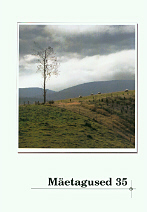Vadja koduhaldjate lemmikud ja vaenlased
The Friends and Foes of Votian House Spirits
Author(s): Enn ErnitsSubject(s): Customs / Folklore
Published by: Eesti Kirjandusmuuseum
Keywords: house fairy; household animals; folk belief; Votians
Summary/Abstract: The article aims to give an overview of the characteristics of Votian house spirits and the creature’s attitude towards domestic animals and pets on the basis of so far unpublished ten texts recorded by the author from Votians in Vaipoole during 1974-1982. The article lists the names of house spirits (domovikka and others), hypostases, locations and time of activity, types of activity, the domestic animals that they were believed to favour and dislike and preventive measures used against them. The majority of names have been recorded in Kattila dialect. This could be, at least partly explained by the relatively early and abundant collection of the related material in the Kattila region and the insufficient collection in the eastern regions of Votia owing to the circumstances. The Votian domovikka dwelled in houses, cattle sheds, and in inner yards (õvvi). It may have assumed the shape of a human or an animal, although no account of an anthropomorphic house spirit could be obtained. The mythical house spirit had been transformed into an almost ordinary weasel or marten which disturbed the peace of horses, cattle and sheep at night. It is possible to distinguish between seven main ways of torturing or disturbing domestic animals in the behaviour of a house spirit: (1) it rides it or causes the animal to sweat (in 6 texts), (2) licks and sucks an animal’s sweat, skin, or wool (in 4 texts), (3) tickles the animal (in one text), (4) generally disturbs the animal with its actions, (5) smears the animal with manure, (6) throws the horse by its legs under the manger, (7) steals milk from the udder or bites the udder. The three latter activities are not mentioned in the texts recorded by the author. As preventive measures against weasels various foul-smelling substances were used (paraffin, tobacco, goat stink) and a small bell was tied around their necks. The names and the interrelated beliefs about Votian house spirits share many common features with the beliefs of other Ingrian peoples and Russians. The material does not mention sacrifice to a house spirit.
Journal: Mäetagused. Hüperajakiri
- Issue Year: 2007
- Issue No: 35
- Page Range: 27-46
- Page Count: 20
- Language: Estonian

